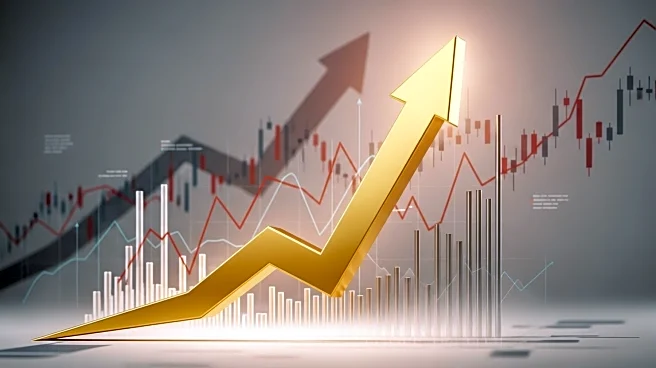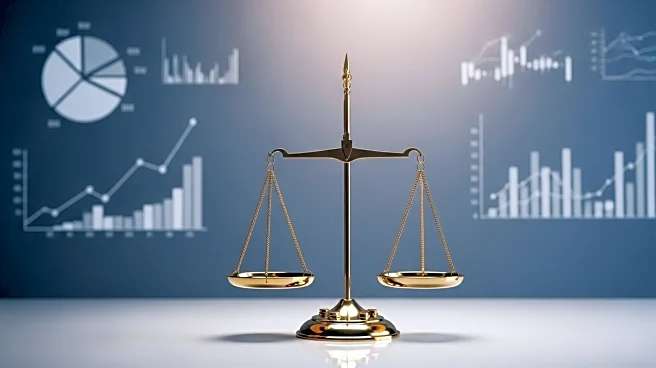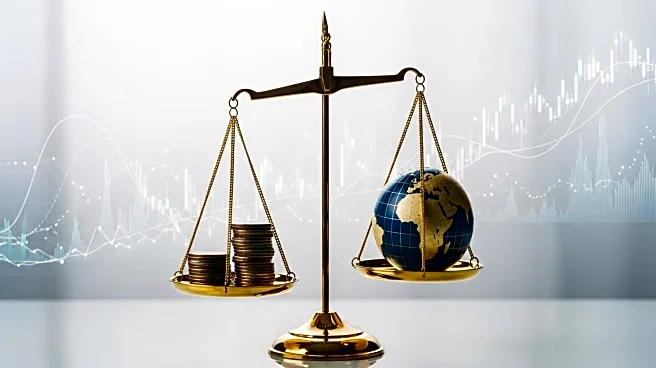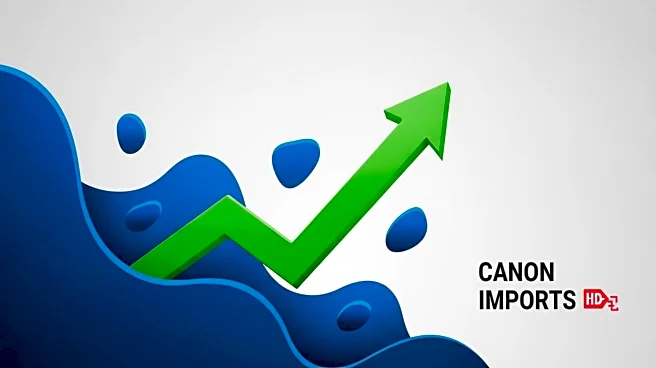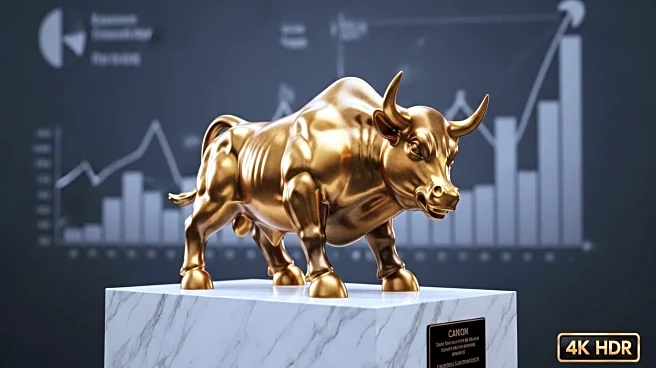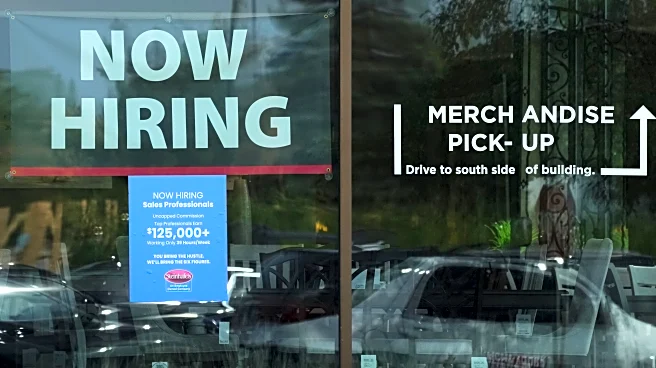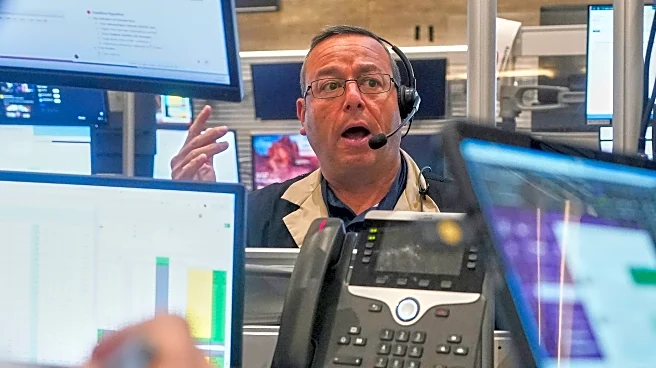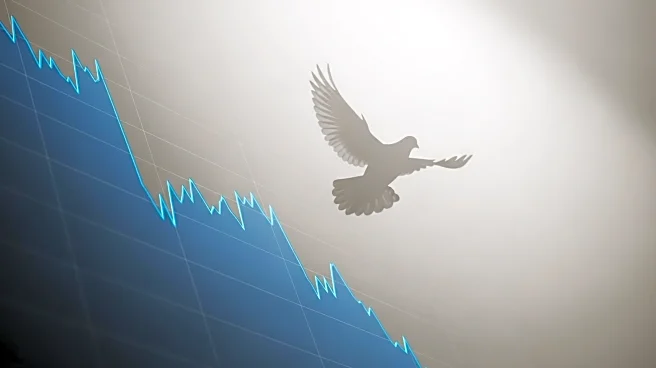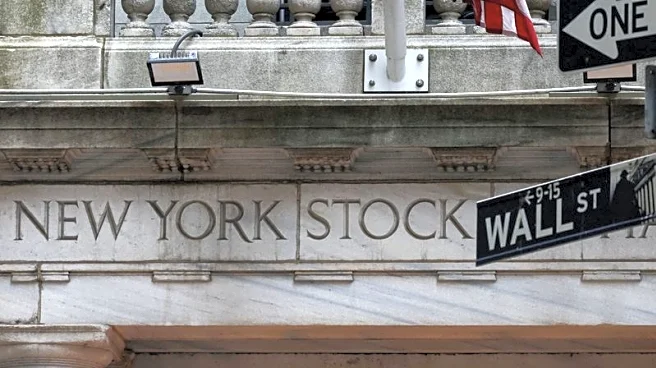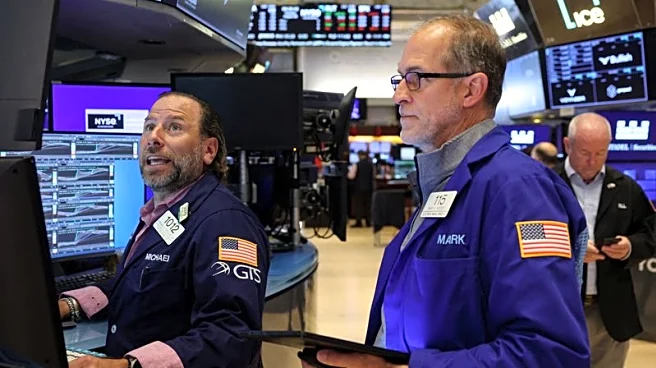What's Happening?
The U.S. economy experienced a stronger rebound in the second quarter than initially reported, with the Commerce Department revising the GDP growth rate to 3.3% from the previous estimate of 3%. This growth is attributed to increased consumer spending despite concerns over President Trump's trade policies. The economy recovered sharply from a 0.5% decline in the first quarter, with consumer spending revised up to a 1.6% annualized rate. Business investment also saw a significant upward revision, particularly in intellectual property products. However, underlying economic momentum appears to be sputtering, with expectations of sub-1% GDP growth in the second half of the year due to a weakening labor market and tariff-induced inflation.
Why It's Important?
The revised GDP figures highlight the resilience of the U.S. economy in the face of trade-related challenges. Consumer spending remains a key driver, accounting for two-thirds of economic activity. The upward revision in business investment suggests that sectors like intellectual property are masking weaknesses elsewhere. However, the economy faces headwinds, including a cooling labor market and inflation pressures from tariffs. These factors could constrain economic activity and impact growth prospects. The Federal Reserve and Wall Street are closely monitoring labor market trends, which have shown signs of weakening, potentially influencing monetary policy decisions.
What's Next?
The U.S. economy may face slower growth in the coming months as the effects of tariffs and a weakening labor market take hold. The Federal Reserve is expected to consider interest rate cuts to support economic growth. Businesses may continue to invest in areas like AI to offset broader economic weaknesses. Consumer spending patterns will be crucial in determining the trajectory of economic growth, with potential shifts in response to inflation and labor market conditions. Policymakers and economists will need to address these challenges to sustain economic momentum.
Beyond the Headlines
The economic rebound underscores the complexities of trade policy impacts on domestic growth. Ethical considerations arise as tariffs affect consumer prices and business costs, potentially leading to disparities in economic outcomes. The focus on intellectual property investment highlights the role of innovation in driving economic resilience. Long-term shifts in consumer behavior and business strategies may emerge as stakeholders adapt to changing economic conditions. The interplay between policy, innovation, and economic growth will continue to shape the U.S. economic landscape.
